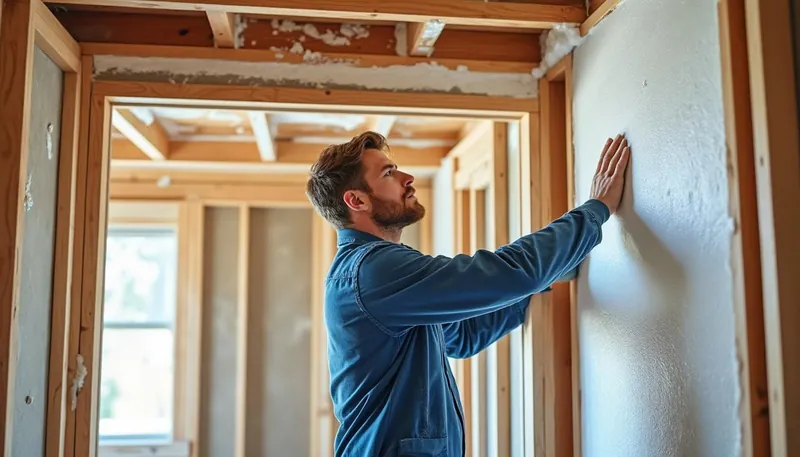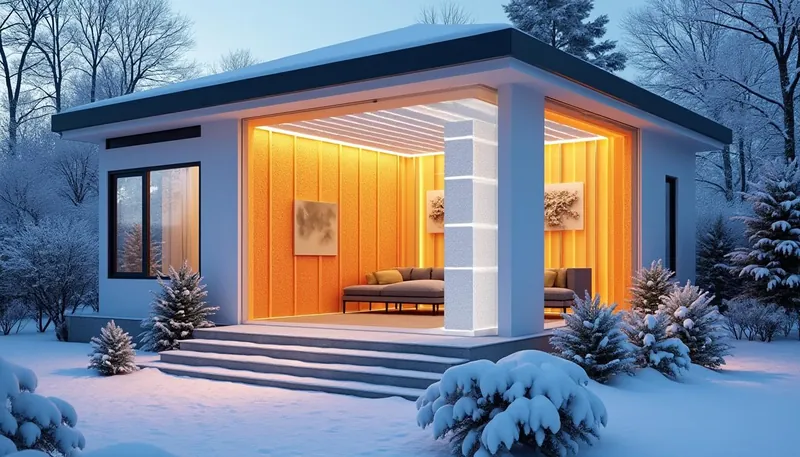As we step further into 2025, one topic that continues to surface in the discussions around home construction and renovation is the use of foam insulation. It’s a pivotal issue, given that homeowners are increasingly looking for ways to enhance energy efficiency without sacrificing comfort. Foam insulation, known for its remarkable ability to seal gaps and reduce air leaks, is making significant waves in both new builds and existing homes. This innovation paves the way for an era of high-performance residences that remain cozy and energy-efficient through the changing seasons.
In the realm of construction, the conversation naturally flows from the excellent thermal performance that foam insulation brings, particularly concerning cost savings and environmental impact. With brands like Johns Manville, Owens Corning, and Icynene leading the charge, there’s a wealth of information available regarding the various types of foam insulation and their applications. In this exploration of foam insulation, we’ll delve not only into its effectiveness within new constructions but also its retrofitting capabilities for existing homes. By examining the multifaceted nature of foam insulation, homeowners can make informed decisions that contribute to more sustainable housing.
Understanding Foam Insulation: What Is It and How Does It Work?
Foam insulation, largely comprised of materials like polyurethane and isocyanate, works by creating a barrier that significantly reduces heat transfer. This blend of chemicals expands upon application, filling voids and gaps that traditional insulation may miss. Encompassing a variety of forms, foam insulation is known for its superior air sealing capacity and long-term durability.
To understand the impact of foam insulation, let’s break down its key components:
- 🌱 Energy Efficiency: Studies suggest that homes insulated with foam can use up to 20% less energy for heating and cooling.
- 🏗️ Structural Integrity: Foam provides additional rigidity to a home’s structure, enhancing its overall stability.
- 🌧️ Moisture Resistance: Unlike traditional materials, foam insulation is less prone to moisture absorption, significantly reducing the chance of mold and mildew growth.
One of the sociocultural advances of recent years has been the transition towards environmentally friendly practices. Foam insulation aligns perfectly with this trend, given the eco-conscious advancements by brands like FOAM-IT and Touch ‘n Foam. They manufacture products that not only insulate homes but also cut down on carbon footprints by lowering energy consumption.
Applications in New Constructions
When it comes to new builds, the incorporation of foam insulation is often a no-brainer. Builders are increasingly opting for spray foam systems, which offer flexibility during the construction phase. The application is usually performed before drywall is installed, maximizing efficiency right from the outset.
One unique aspect of foam insulation in new construction is its compatibility with modern building codes. Homes designed with energy efficiency in mind, particularly in energy-conscious states, frequently feature foam to meet stringent regulations. Key advantages include:
- 🏡 Seamless Installation: Spray foam can be applied directly to surfaces, creating an air-tight seal.
- ⚙️ Enhanced Durability: Popular brands like Tiger Foam and Demilec offer products that endure years without degradation.
- 💰 Cost-Effective Solutions: Although the initial investment is higher, the long-term savings on energy bills often outweigh the upfront costs.
These factors ultimately lead to a well-rounded solution for homeowners seeking comfort in their new residences. A common trend among builders is to factor foam insulation as part of a comprehensive energy package, giving clients the assurance they need while building their future sanctuary.

Retrofitting Existing Homes with Foam Insulation
Transitioning to the retrofitting of existing homes, foam insulation proves to be equally effective. The challenge often lies in balancing modern standards with the historical integrity of older houses. Many homeowners are drawn to foam insulation for its ability to dramatically change the comfort levels of their dwellings without extensive renovations.
One case study involves a homeowner in a vintage Cape Cod house from the 1950s who undertook a significant retrofit. The goal was to enhance insulation while preserving the original charm of the structure. This project illustrated how exterior insulation can be installed effectively, transforming the home’s thermal envelope while maintaining aesthetics.
Challenges and Considerations
While retrofitting can seem daunting, understanding the wall assembly in your existing home is the first step. Here are critical considerations when opting for foam insulation:
- 🔍 Wall Assembly Assessment: A thorough inspection helps identify materials used, allowing for better foam integration.
- 🏆 Building Codes: Always check local regulations to ensure compliance when adding insulation.
- 💡 Future-Proofing: Consider how the added insulation will impact heating/cooling systems and electrical considerations.
Homeowners have reported experiencing quicker heating and cooling response times, alongside lower utility bills, after implementing foam in their properties. These results align with the trend toward energy-efficient homes in recent years, paving the way for a refreshing change in the home insulation landscape.

Comparative Analysis: Foam vs. Traditional Insulation
With a multitude of insulation options available, it’s wise to conduct a thorough comparative analysis. Traditional materials, like cellulose and fiberglass, often fall short in performance compared to foam insulation. While they are generally less expensive upfront, their long-term effectiveness and energy savings typically don’t match up.
| Insulation Type | Cost per sq. ft. | Energy Efficiency | Moisture Resistance | Durability |
|---|---|---|---|---|
| Foam Insulation | $0.44 – $0.65 | Excellent | High | Long-lasting |
| Cellulose | $0.30 – $0.50 | Good | Moderate | Moderate |
| Fiberglass | $0.30 – $0.50 | Fair | Low | Short-term |
This table clearly illustrates the advantages foam insulation has over traditional options, especially in the face of rising energy costs. When weighing immediate expenses against long-term savings, the insulative performance and additional benefits of foam rise to the forefront.
Popular Brands and Innovations in Foam Insulation
The foam insulation landscape continues to evolve, with numerous manufacturers offering innovative solutions tailored to meet modern demands. Brands like CertainTeed have developed advanced formulations that ensure even better performance and reduced environmental impact.
Some examples of innovative products include:
- 🔧 Tiger Foam: Known for its high yield per kit, ensuring efficiency.
- 🌿 Demilec: Provides eco-friendly options that contribute to LEED certification.
- 📦 Handi-Foam: Offers versatile options suitable for various applications, including crawlspaces and basements.
This constant innovation is a testament to the relevance of foam insulation in today’s construction and renovation projects. As energy-saving mandates become more stringent, brands within the foam insulation industry are stepping up to provide solutions that enhance both comfort and productivity.
Can foam insulation be installed over old insulation?
It is generally not recommended to install foam insulation directly over old insulation, as this can create gaps and reduce effectiveness. It’s best to assess and, if necessary, remove the old material before applying foam.
How does spray foam insulation compare to fiberglass?
Spray foam insulation provides superior air sealing, energy efficiency, and moisture resistance compared to fiberglass, although it has a higher initial cost.
Is foam insulation suitable for all climate zones?
Yes, foam insulation can be adapted for use in various climate zones, offering benefits in both warm and cold environments.
What are the health concerns regarding foam insulation?
Once fully cured, spray foam is safe for your indoor environment. It’s crucial to ensure proper installation to avoid any issues during application.
How long does foam insulation last?
Foam insulation can last over 20 years when properly installed and maintained, making it a durable choice for homeowners.


